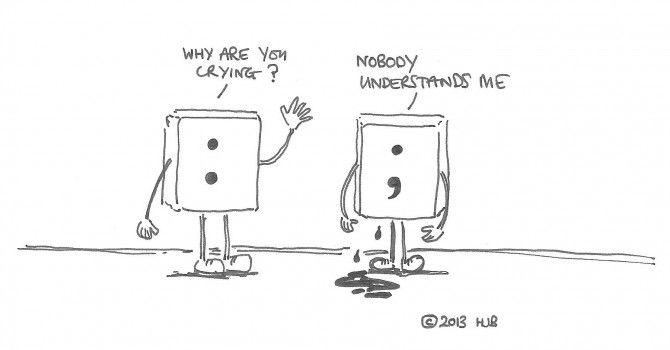AuthorHi, I'm Ray Evans. I'm a certified copyeditor and proofreader. Archives
September 2023
Categories |
Back to Blog
Hello again, my wonderful word wizards! Today, I want to talk to you about semicolons. You know, those little misunderstood marks that sit somewhere between a comma and a period; the ultimate middle child of punctuation. It's just so versatile, isn't it? When I was young and immature, I turned my nose up at them but as I gotten older I’ve learned to love them and you should too! How Should Semicolons be used?It’s main uses are to:
(A clause is a group of words that contains both a subject and a predicate.) Examples of each:
And that’s all there is to it! The semicolon tells your readers that the two clauses are related to the same idea. It's like a period, but not as final. It's like a comma, but with more significance. Of course, it should only be used when absolutely necessary; otherwise, it can be pretty pretentious. (Author note: I’m something of a semicolon aficionado; my household accounts for 42.6% all semicolon usage on the East Coast. Therefore I do acknowledge that I may be a little bit biased.)
0 Comments
Read More
Leave a Reply. |
 RSS Feed
RSS Feed
